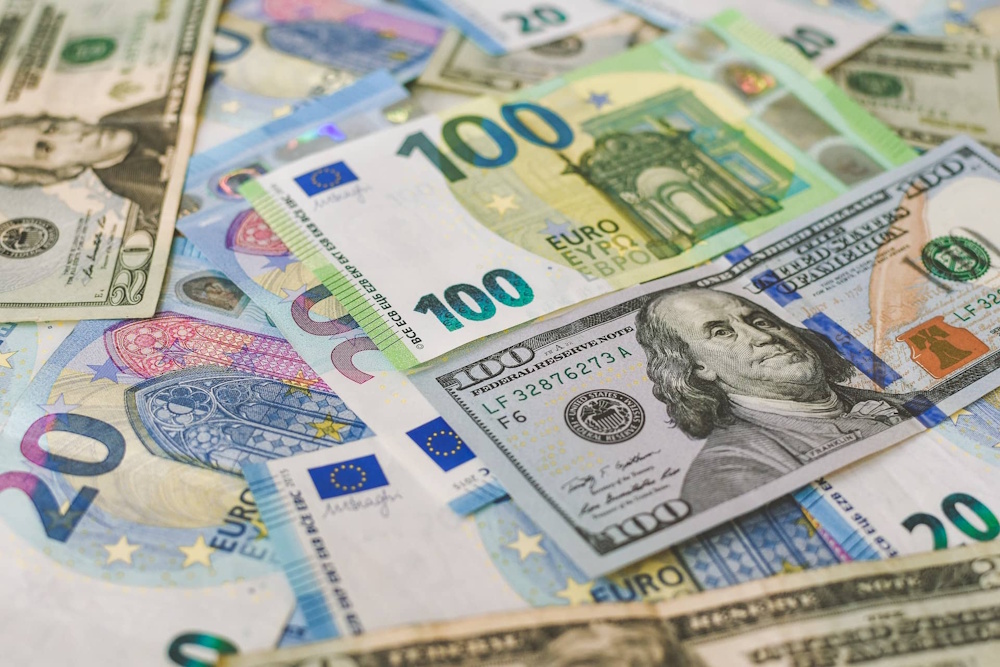The EUR/USD pair is currently trading around 1.1620, showing signs of stabilization following a week marked by significant volatility influenced by U.S. inflation data, Eurozone PMI expectations, and increased geopolitical tensions. Investors are exercising caution as macroeconomic indicators from both sides of the Atlantic present conflicting signals—softening U.S. CPI data stands in stark contrast to ongoing weakness in European manufacturing. The euro’s slight recovery from 1.1580 highlights a delicate market sentiment, as traders remain hesitant to commit to significant positions in anticipation of the Federal Reserve’s upcoming policy decision and the ongoing U.S. government shutdown, which has now reached its 24th day.
EUR/USD is currently trading within a narrow consolidation range, oscillating between 1.1570 and 1.1665. The pair has struggled to surpass the 200-day EMA at 1.1665 on several occasions, while support remains robust at 1.1535. The RSI is currently positioned at approximately 45, indicating a state of indecision and a lack of strong directional conviction. The 20-day EMA at 1.1627 and 50-day EMA at 1.1645 serve as resistance levels, sustaining a bearish outlook unless a clear breakout above 1.1700 takes place. A sustained move below 1.1570 would create potential for movement toward the 1.1490–1.1500 psychological zone, whereas a breakout above 1.1665 could lead to 1.1710, followed by 1.1835, indicating the upper limit of the medium-term corrective phase.
The euro’s subdued performance indicates that investors are closely monitoring the recent U.S. CPI, which increased by 3.0% year-over-year, marginally under the anticipated 3.1%. The slight shortfall sparked a measured sense of optimism regarding the possibility that the Federal Reserve might persist with its easing measures as the year concludes. The futures markets currently reflect expectations for two 25-basis-point rate reductions—one anticipated in October and another in December—resulting in the U.S. Dollar Index remaining around 99.07, an increase of 0.14% for the day. Nonetheless, the dollar continues to be supported by safe-haven flows as the extended government shutdown exacerbates fiscal uncertainty. Treasury yields have softened, with 10-year U.S. yields declining to their lowest level in 12 months, which has diminished dollar momentum and permitted the euro to stabilize above 1.1600. On the European front, PMI data due from the Eurozone is anticipated to underscore the persistent contraction in manufacturing, with projections indicating readings below the crucial 50 threshold. The services sector persists in indicating stagnation, intensifying the pressure on the European Central Bank to uphold an accommodative stance. Market participants anticipate that ECB policymakers will reaffirm dovish guidance in their forthcoming meeting, pointing to sluggish wage growth and a drop in new orders.
The euro’s failure to capitalize on declining U.S. yields highlights investor doubts regarding the Eurozone’s recovery, particularly as energy imports persist in impacting trade balances. The energy shock continues to be a significant macroeconomic factor influencing EUR/USD volatility. Brent crude experienced a significant increase of over 5% in response to the latest U.S. sanctions imposed on Russia’s Rosneft and Lukoil. This development has tightened global supply expectations, resulting in oil reaching a two-week high. At the same time, news of China halting Russian seaborne oil purchases raised alarms about a potential broader geopolitical repricing. The recent increase in oil prices—currently around $95.80 per barrel—poses a risk to Europe’s delicate inflation situation, which could exacerbate the region’s current account deficit. The euro’s subdued reaction to these developments indicates that traders are progressively perceiving the single currency as fundamentally susceptible to energy shocks.

